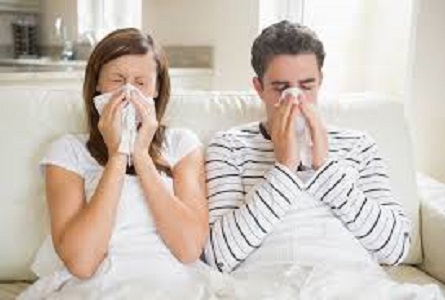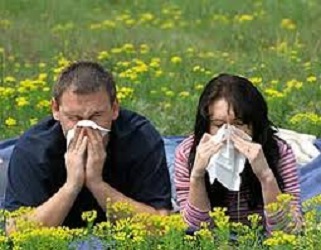
Spring Colds – We at On Call Medical Clinic know that Spring like Winter can bring on colds and the flu. As the winter starts to fade, our immune systems might be a bit weaker, leaving us susceptible to one last cold before the change of seasons. We would like to give you some good food choices that help you fight colds and the flu.
Yogurt
Trillions of bacteria work to create a healthy balance in our digestive and immune systems. Yogurt and kefir products help fight off bad bacteria types while feeding good bacteria.
Blueberries
The USDA Agriculture Research Service and Cornell University have found that blueberries are the most powerful antioxidants out of all commonly eaten fresh fruit. This is due to their high amount of vitamin C and anthocyanins.
Seeds and nuts
Seeds and nuts offer antibacterial or antioxidant power to fight colds. Use anise seeds as a tea up to three times a day to ease coughing or congestion. Pumpkin seeds, high in vitamin E and zinc, can reduce the time you’re sick with a cold. Antioxidants in sunflower seeds reduce phlegm, and protect cell walls from damage that can open them to infection. Lastly, only a few brazil nuts a day have enough selenium and cytokine proteins to battle bad bacteria.
Garlic
Garlic contains an antimicrobial ingredient allicin, which helps fight against bad bacteria like yeast, rids the body of toxins, and promotes healthy gut flora. Studies have shown that garlic can not only help you recover from colds, but also ward them off.
Fish
Coming out of spring, your body is naturally low in vitamin D which is a key cold fighter. Wild salmon, tuna, or sardines are high in Vitamin D, and pair well with citrus and a yogurt dressing – also beneficial for colds. These are likewise rich in zinc and omega 3s which reduce inflammation.
Sweet Potatoes
Sweet potatoes are rich in beta-carotene, that later turns into vitamin A, and is found in other bright orange veggies, such as carrots. This boosts T-cell function, which blocks or destroys harmful cold-causing bacteria. Vitamin A also strengthens mucosal surfaces such as your eyes, skin, nose and digestive system – all key targets for pesky colds.
Red Peppers
Red peppers are similar to citrus fruits in that they are extremely high in vitamin C. One pepper has about 150 mg of the vitamin. While that’s twice the daily recommended amount for women, you’ll need four times as much a day if you have a cold. Nevertheless, peppers can be paired with yogurt dips and are an easy way to snack your way to better health.
Milk
Vitamin D doesn’t just fight depression and build strong bones, but also helps combat our risk of catching a cold. Vitamin D in milk helps build up weakened immune defense from a lack of sun during winter months. Vitamin D milk can also help lower risk of respiratory infections, as well as thicken mucus and phlegm to help flush out respiratory bacteria.
We at On Call Medical Clinic hope that you found this information helpful. Remember when the cold or flu creeps up on you and your primary physician is not available, we are her for you 7 days a week. Please visit our website at www.oncallclinic.com to see all the medical services we offer.

